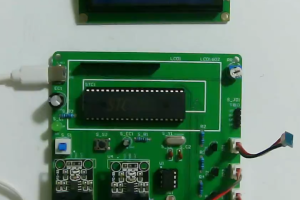设计说明书
总字数:9000+
当前在很多高校教室照明通常是通过学生或者工作人员通过按钮进行关闭,然后巡逻人员进行检测,但是还是经常出现长明灯的问题,使得高校电能浪费成为一个急需解决的问题。此次设计一款基于单片机的教室智能灯控系统,该系统可以通过红外对射管对进入教室的人数进行统计,检测到人数在10人,开一盏灯,20人开2盏灯,30人开三盏灯;通过光敏电阻检测光照值,当大于设置最大值,不开灯,在最小值和最大值之间,进行自动调节,小于设置最小值,灯最亮;通过那就可设置不同的开灯人数和光照阈值;通过LCD1602显示屏显示数据。经过实物测试,给设计可以实现根据当前的光照强度和当前的人数控制照明灯的开关,检测到无人自动进行关闭,其操作简单,性能较好,能够满足当前高校对教室照明灯光控制需求。
关键词:教室;智能灯;人数检测;光敏电阻
Abstract
At present, in many colleges and universities, the classroom lighting is usually turned off by students or staff through the button, and then the patrol personnel to detect, but there is still often the problem of permanent lamps, which makes the waste of electrical energy in colleges and universities become an urgent problem to be solved. The design of a single chip microcomputer based classroom intelligent light control system, the system can enter the classroom through the infrared ray tube statistics, detected the number of people in 10, open a lamp, 20 people open 2 lights, 30 people open three lights; The light value is detected by the photoresistor. When it is greater than the maximum value, the light will not be turned on. Automatic adjustment will be made between the minimum value and the maximum value. Through that you can set different number of lights and light threshold; Display data through LCD1602 display screen. After the physical test, the design can realize according to the current lighting intensity and the current number of people to control the switch of the lights, the detection of no one automatically shut down, its simple operation, good performance, can meet the current university to the classroom lighting control needs.
Key words: classroom; Intelligent lamp; Number detection; photoresistor
目 录
第一章 概述
1.1 研究背景及其目的意义
1.2 国内外发展现状
1.3 该设计实现目标
第二章 系统方案设计
2.1 主要元器件选择
2.1.1 主控芯片方案选择
2.1.2 教室人数检测模块方案选择
2.2 系统总体设计思路
第三章 硬件电路
3.1 控制核心模块电路
3.2 教室人数采集模块电路
3.3 光照强度检测模块电路
3.4 LCD1602显示模块电路
3.5 按键模块电路
3.6 照明模块电路
第四章 软件设计
4.1 主程序流程设计
4.2 按键函数流程设计
4.3 显示函数流程设计
4.4 处理函数流程设计
第五章 实物测试
5.1 实物焊接测试
5.2 实物整体焊接测试
5.3 实物上电测试
5.4 实物前后门人数计数测试
5.5 实物光照测试
六 结论与展望
致谢
参考文献
附录
附录1:原理图
附录2:PCB
附录3:主程序
购买后可查看具体内容!

